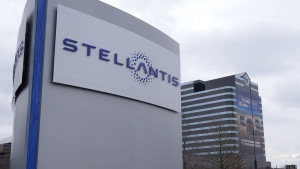Stellantis, a multinational automotive company, has announced a recall of nearly 1.2 million vehicles due to a software glitch that disables the rear camera. The recall affects various models from the company’s brands, including Chrysler, Dodge, Jeep, and Ram.
According to Stellantis, the software issue can cause the rearview camera to display a blank or distorted image, or fail to turn on altogether. This poses a safety risk for drivers, as the rear camera is an essential tool for reversing and parking.
The affected vehicles were manufactured between 2019 and 2021 and include popular models such as the Jeep Grand Cherokee, Ram 1500, and Dodge Charger. Stellantis has stated that they will notify owners of the affected vehicles and provide a software update to fix the issue free of charge.
This recall comes after the National Highway Traffic Safety Administration (NHTSA) opened an investigation into the issue in May. The NHTSA received multiple complaints from drivers about the rear camera malfunctioning, leading to the recall.
Stellantis has advised owners of the affected vehicles to contact their local dealership to schedule a software update appointment. In the meantime, drivers are urged to use extra caution when reversing or parking without the assistance of the rear camera.
This recall is the latest in a series of software-related issues in the automotive industry. In recent years, car manufacturers have increasingly relied on software to control various functions in vehicles, leading to a rise in recalls due to software glitches.
Stellantis has assured customers that they are committed to ensuring the safety and satisfaction of their customers and will continue to monitor and address any potential issues with their vehicles.
In conclusion, Stellantis is recalling nearly 1.2 million vehicles to fix a software glitch that disables the rear camera. Owners of the affected vehicles are advised to contact their local dealership for a free software update to address the issue. This recall highlights the importance of regularly checking for software updates and the need for car manufacturers to prioritize safety in their vehicles.




